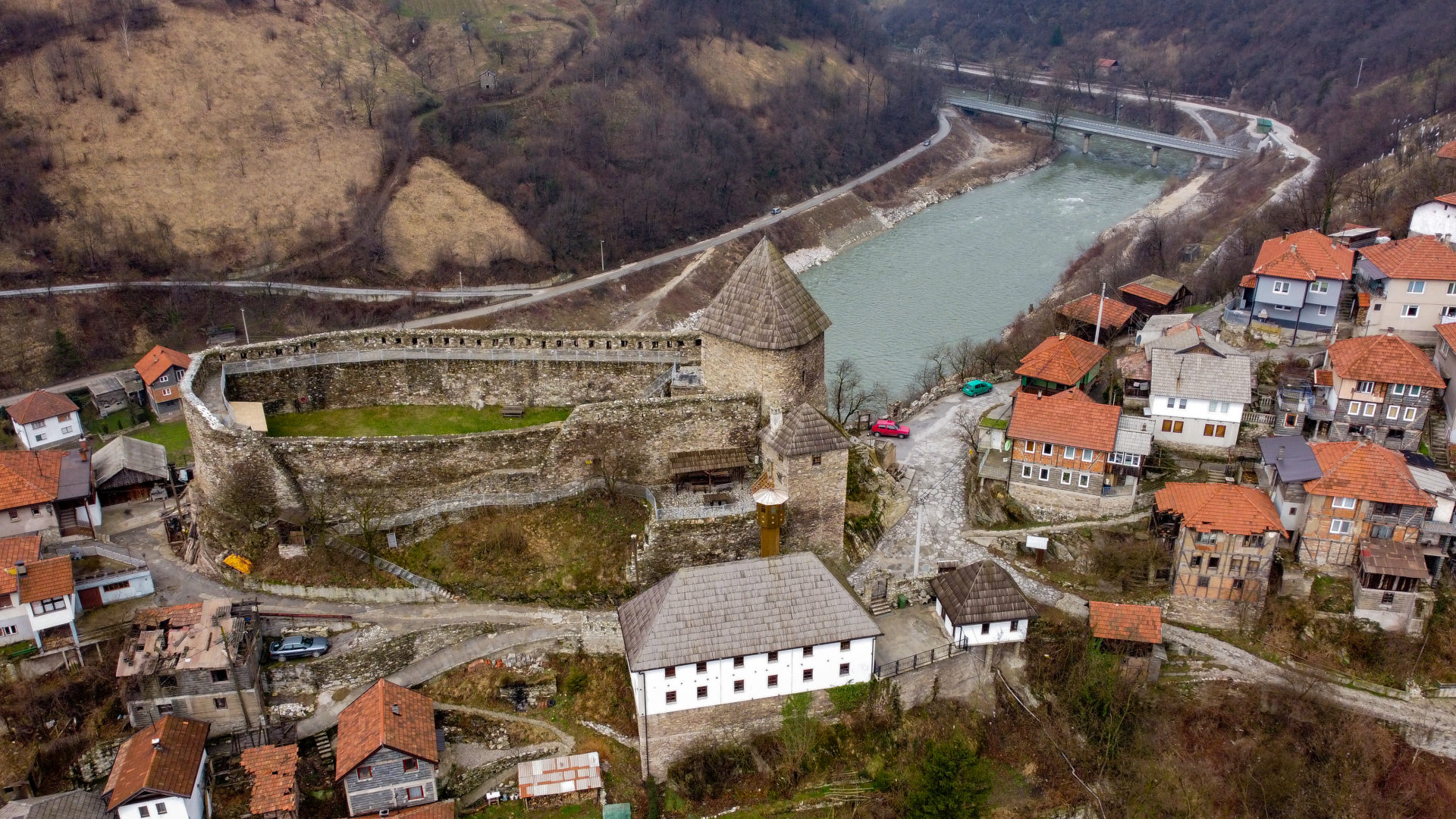
Located 14 kilometers from Zenica, Vranduk Fortress is one of the most important sights of Bosnia and Herzegovina (BiH). Once a royal city, its impressive appearance testifies to life in the medieval Kingdom of Bosnia.
Although built in the 14th century, the most significant period in Vranduk’s history was a century later, during the reign of the penultimate king, Tomaš. He paid special attention to the development of this fort. Today, the fortress is a national monument of BiH.
The director of the Museum of the City of Zenica, Adnadin Jašarević, highlights the many ways in which they have taken full advantage of the fortress’s potential. Visitors can see the smithy, dining room, scriptorium, shooting range, kitchen, and even a pillory. Concerts of medieval music are held, visitors can try their hand at medieval games such as archery, and there is also a festival of medieval cuisine, all of which evoke the ambience of the medieval Bosnian state.
“The final step is its digitization, which we were able to do thanks to the European Commission, through the Fortress Reinvented project. In addition to three-dimensional rendering, it includes digital content such as music and movies, and exhibitions, which complete the image of the fortress and the Bosnian medieval state,” says Jašarević.
Financing is a big issue, and Jašarević says that funds for construction work are at an all-time low. The fortress, which is more than six hundred years old, needs regular maintenance and restoration.

“Our problem is the one-sided and inappropriate work of tourist boards, which are guided by interests that have little to do with the promotion of cultural heritage for the purpose of tourism development. They are only interested in earnings, not the benefits for the state and its citizens. So, we turned to international funding networks, such as the European Commission, European Cultural Heritage, and Western Balkans Funds,” emphasizes Jašarević.
Vranduk Fortress records 3,000 visits a year despite inadequate support, with most visitors coming from Western Europe. When visiting the fortress, tourists can see three floors, and on each of them, authentic objects and replicas that take visitors back to the Middle Ages. On the first floor of the fortress, you can find arms from that period, like rifles and shackles. On the second floor, visitors can see two large royal tables and some royal attire on display. On the top floor, visitors can view the office and the clerk’s suit.
Vranduk Fortress has withstood time and wars for more than six hundred years, despite numerous attempts to demolish it. Derived from the word branduk, which means “to defend,” today it seeks to defend the cultural heritage of Bosnia and Herzegovina.
——————————
This article was initially published within the first edition of MIR Magazine. MIR, which means ‘peace’ in Bosnian is an annual publication and platform for young inventive people developed by the Post-Conflict Research Center and Balkan Diskurs. It is dedicated to individuals and organizations that left us a legacy of strongly built foundations to continue our fight for peace and justice.






